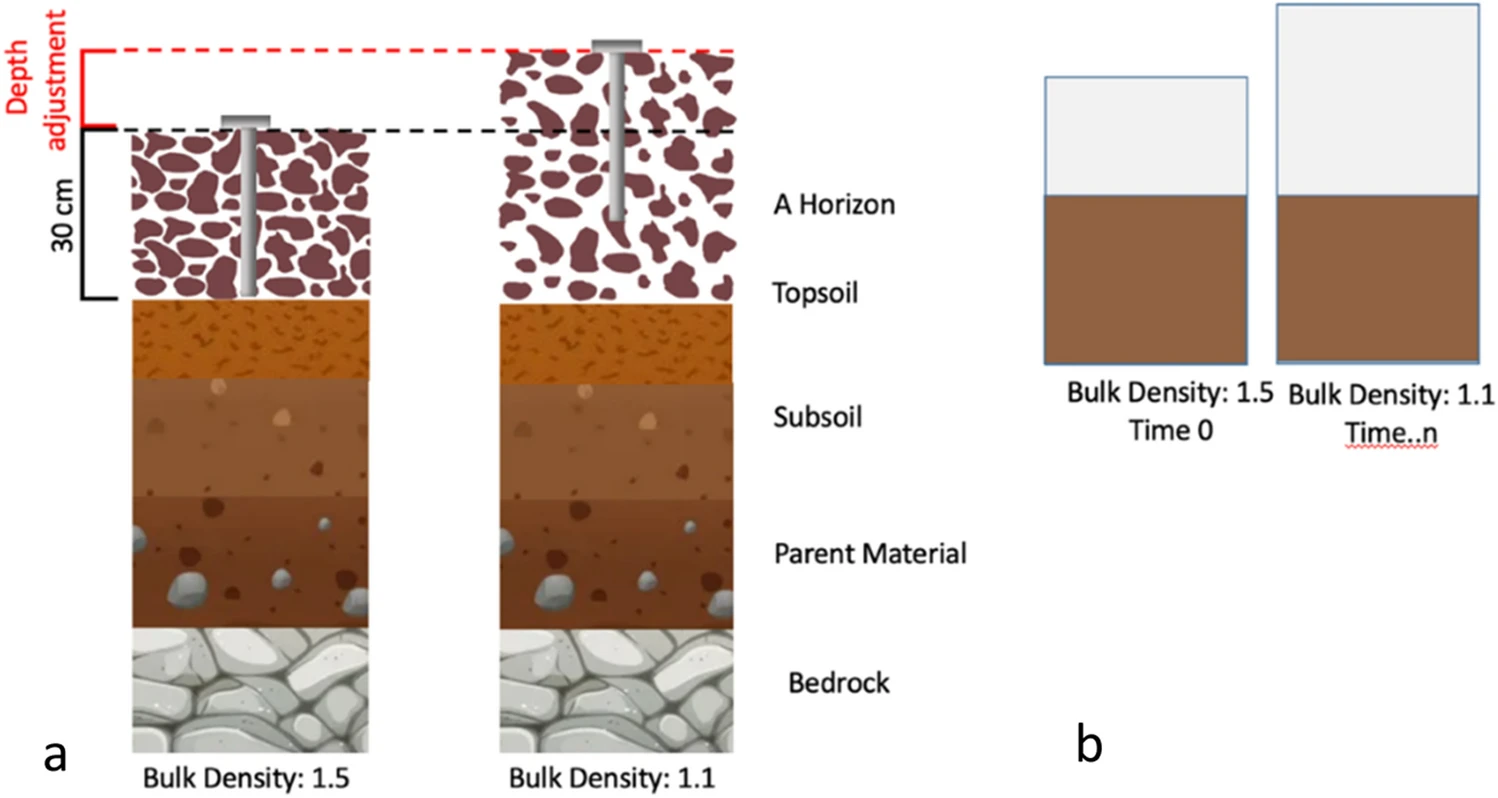New MSU research helps better quantify soil carbon stock changes
In a new paper published in Scientific Reports, MSU professor Bruno Basso shows how scientists must use a correction calculation to accurately quantify changes in soil carbon stocks over time.

EAST LANSING, Mich. — Newly published research from Michigan State University demonstrates how to evaluate soil carbon stock changes more accurately. This calculation has significant implications on measuring the actual environmental benefits of regenerative agriculture practices and economic consequences through emerging carbon markets.
The findings were published in Scientific Reports, a Nature Portfolio journal.
The project was led by Bruno Basso, a John A. Hannah Distinguished Professor in the departments of Earth and Environmental Sciences, and Plant, Soil and Microbial Sciences, as well as the W.K. Kellogg Biological Station.
His team included two members of his laboratory: Ames Fowler, a crop modeling research associate, and Neville Millar, a postdoctoral fellow. Will Brinton, the founder and chief science officer for Woods End Laboratories in Maine, also contributed.
The importance of agriculture is impossible to overstate, providing the food, fiber and fuel that supports a growing world population. But challenges abound, with climate change proving to be one of the most difficult to tackle. Farmers, scientists and corporations are investigating ways to make this indispensable industry more sustainable.
According to a 2022 summary for policymakers from the Intergovernmental Panel on Climate Change, agriculture is responsible for 23% of global greenhouse gas emissions. Given the advances in regenerative agriculture such as cover crops and no-till systems, however, Basso said this presents opportunities to employ meaningful modifications.
“Agriculture is the main sector affecting soil and landscape management, so improving agricultural management and policy that supports it is essential to reducing greenhouse gas emissions,” he said. “This includes sequestering carbon in the soil, which several private industry and nonprofit organizations have begun valuing.”
Soils are able to hold vast quantities of carbon — greater than the atmosphere and vegetation combined — which helps the environment and, more recently, farmers’ bottom lines. Soil carbon incentives and markets have led private companies and nonprofits to pay farmers for sequestering carbon in soil. But many farmers remain skeptical.
The cost of soil sampling, remote sensing image analysis, modeling and other carbon stock assessment methods currently renders the economic benefit tenuous. Basso said farmers are looking for certainty in identifying changes in soil carbon stocks.
In addition, many countries around the world use soil carbon stock changes as a way to determine the success of agricultural policy shifts, but similar problems with cost and unreliable information persist.
One of the principal challenges, Basso said, has been the adoption of a unified way of measuring soil carbon changes accurately.
“Science offers an important perspective in the business of carbon markets and agricultural policy,” Basso said. “If we aren’t capturing carbon stock changes appropriately and precisely, then we never develop a true understanding of the effectiveness of our sustainability efforts.”

To that end, Basso and his team examined the international standard for assessing soil carbon stock changes, which involves repeated fixed-depth soil sampling down to at least 30 centimeters in the same location.
Using hypothetical 30-centimeter samples taken at three specified times with prescribed changes in soil organic carbon, researchers showed that variations in bulk density result in errors with fixed-depth sampling.
As more carbon is sequestered in the soil, the bulk density is lessened because more air is present. If carbon is removed, less air is involved, thus making the bulk density greater. Current calculations of soil organic carbon don’t factor in this shift in bulk density.
“This new approach closes the gap for those of us who over decades of on-farm studies noticed bulk density drifting either up or down, depending on management, yet we had no commensurate tools to easily adjust for it,” said Will Brinton, a coauthor of the study. “This work provides a straightforward, field and laboratory friendly answer to correct for the well-known past errors."
With an adjustment calculation that considers bulk density called equivalent soil mass (ESM), Basso and his team demonstrated that current methods of soil carbon stock measurement can still be used as long as ESM is also implemented. This means altering soil depths on measurements depending on bulk density changes.
For example, in a scenario where bulk density decreases over time, the depth of the sample must increase. The ESM calculation helps scientists determine the required depth of the new sample.
Ames Fowler and Neville Millar, coauthors of the study, added: "Including the calculation in carbon market monitoring, and reporting and verification platforms and protocols, will be important. It can help incentivize farmers who may be wavering about adopting costly conservation management practices.”
The project was funded in part by the U.S. Department of Agriculture's National Institute of Food and Agriculture, the Great Lakes Bioenergy Research Center, and the U.S. Department of Energy Office of Science.



 Print
Print Email
Email




